Yesterday I visited the sycamore I’ve been following for the past twelve months, a last visit to scrutinize it so closely. One thing I was curious to know was how the mild winter has affected it. In early January, it should be well and truly dormant, but from what I could observe, the buds were already on the move, bursting their tightness and beginning to stretch into leaves too soon!
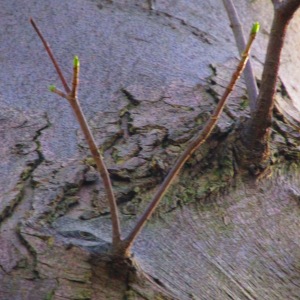
Bud burst… in early January!
The forecasters predict frostier weather later this week, which may well halt the urge to leaf.
A bare tree forces a tree-follower to look closer at the permanent structure, the ‘skeleton’, and I noticed things that perhaps I had seen before but not properly registered and certainly not put into words. The base of the tree is quite craggy, the bark fractured into plates typical of mature sycamores. The multi-stems are smoother, more skin-like.
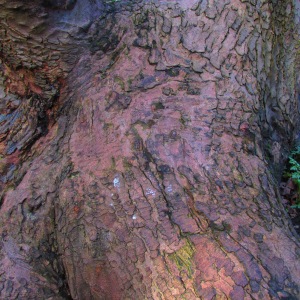
Craggy bark at base of this sycamore
I also noted silvery and green blemishes which I realised were lichens. Are these newly acquired or did I just not spot them before..?
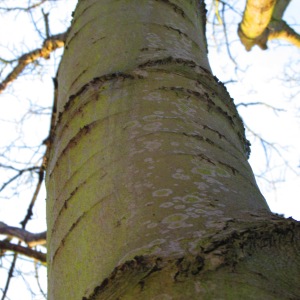
Lichens
There are dribbles and black staining I seem to have overlooked previously. It appears that two stems have merged together but not so closely that the commingled stem is watertight. This allows for moulds and slimes to take hold which may not have found opportunity otherwise, thus adding to the biodiversity of the tree as an ecosystem in its own right.
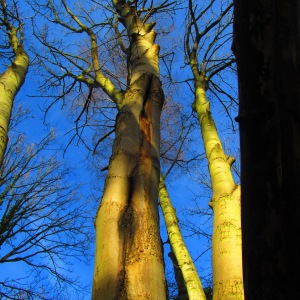
Dibbles and stains
I think the thing that surprised me the most about this tree is that it didn’t produce any flowers and thus no ‘helicopters’. For a tree species that is widely vituperated as a weed, this individual defies the profligate reproduction typical of its kind, this past year at least. I should make a note and see if it produces seed in 2016. Remind me someone, please!! The late Felix Dennis, in his collection of tree verse Tales from the Woods, wrote a poem entitled ‘Sycamore’, noting that Some rave of sycamore as if they crept/ Upon the countryside, hearts full of vice;/ Yet long before this frozen land was swept,/ All trees were interlopers of the ice. He considered it a “noble tree” and chased people off his land who sought to rip up sycamore youngsters.
On that slightly controversial note, I end my year of tree-following. For various reasons I have decided against more official tree-following in 2016, but I will continue to read with interest those accounts by others. Not forgetting to thank squirrelbasket for hosting this monthly event – cheers Pat!

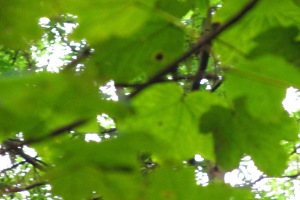

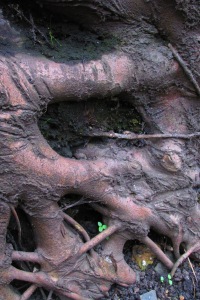
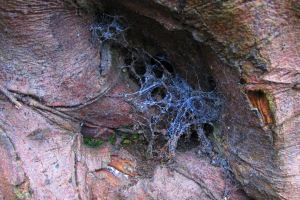
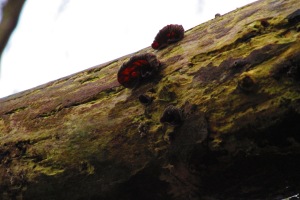
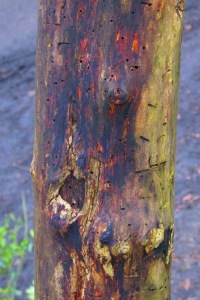
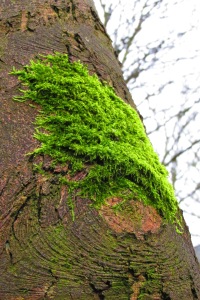
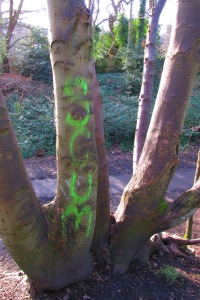
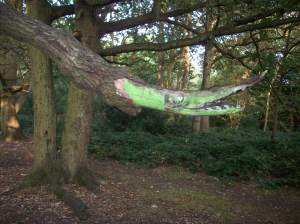 A crocodile is the last thing you’d expect to see in a copse, whether the snap-jaw is real or otherwise. Yet this reptilian graffiti surprised me during a walk on Tooting Graveney Common. Normally, I’d deplore graffiti being applied to a tree; this example I don’t mind as its ludic imaginativeness made me smile, and I doubt it did harm to the tree.
A crocodile is the last thing you’d expect to see in a copse, whether the snap-jaw is real or otherwise. Yet this reptilian graffiti surprised me during a walk on Tooting Graveney Common. Normally, I’d deplore graffiti being applied to a tree; this example I don’t mind as its ludic imaginativeness made me smile, and I doubt it did harm to the tree.
